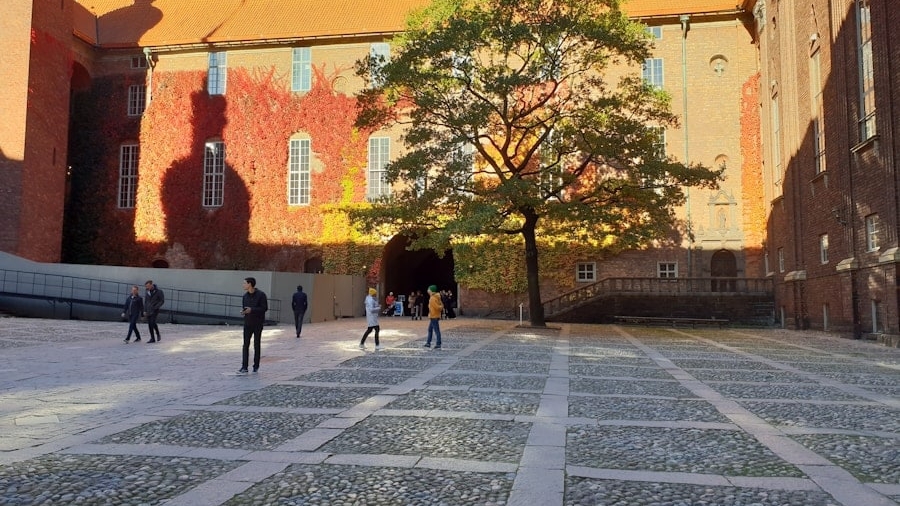The concept of the metaverse has evolved from a niche idea in science fiction to a burgeoning reality that encompasses a vast array of digital environments. These virtual spaces allow users to interact with one another and their surroundings in ways that mimic real-life experiences. The metaverse is not merely a single platform but rather a collective of interconnected virtual worlds, each offering unique experiences and opportunities for social interaction, commerce, and creativity.
As technology advances, the metaverse is becoming increasingly sophisticated, integrating elements such as augmented reality (AR), virtual reality (VR), and blockchain to create immersive environments that engage users on multiple levels. One of the most compelling applications of the metaverse is its potential to recreate historical environments. By leveraging advanced technologies, developers can construct detailed replicas of significant historical sites, events, and cultures, allowing users to explore and interact with the past in ways that were previously unimaginable.
This intersection of history and technology opens up new avenues for education, research, and cultural preservation, making history accessible to a broader audience. As we delve deeper into the possibilities offered by historical metaverse environments, it becomes clear that they hold the potential to transform our understanding of history and enhance our engagement with it.
Key Takeaways
- Metaverse environments offer a virtual space for users to interact and engage with historical content in a new and immersive way.
- Recreating historical environments in the metaverse allows for the preservation and exploration of past cultures, events, and landmarks.
- Immersive experiences in historical metaverse environments provide users with a deeper understanding and connection to history through interactive storytelling and virtual exploration.
- Challenges and limitations in recreating historical experiences in the metaverse include accuracy, authenticity, and ethical considerations.
- Historical metaverse environments have the potential to revolutionize education and research by providing accessible and engaging platforms for learning and discovery.
Recreating Historical Environments in the Metaverse
Reconstruction of Ancient Civilizations
Projects like “Rome Reborn” digitally reconstruct ancient Rome at various points in its history, allowing users to experience the city as it once was. This not only serves as an educational tool but also as a means of preserving knowledge about a civilization that has significantly influenced modern society.
Attention to Historical Nuances
Recreating historical environments requires attention to the nuances of daily life during those times.
For example, a virtual representation of medieval Europe might include interactive elements such as markets bustling with merchants, knights in armor, and peasants going about their daily tasks.
Immersive Historical Experiences
By immersing users in these richly detailed environments, developers can foster a deeper understanding of historical contexts and encourage exploration beyond mere visual aesthetics.
Immersive Experiences in Historical Metaverse Environments

Immersive experiences in historical metaverse environments are designed to engage users on multiple sensory levels, creating a sense of presence that transcends traditional learning methods. Virtual reality technology plays a crucial role in this immersion, allowing users to don VR headsets and step into meticulously crafted worlds where they can interact with their surroundings. For instance, a user might find themselves walking through the bustling streets of ancient Athens, engaging in philosophical debates with Socrates or witnessing the construction of the Parthenon firsthand.
Such experiences not only captivate users but also facilitate experiential learning, where knowledge is gained through active participation rather than passive observation. Moreover, these immersive environments can incorporate gamification elements to enhance user engagement. By introducing quests or challenges that require users to solve historical puzzles or complete tasks relevant to the time period, developers can create a dynamic learning experience that encourages exploration and critical thinking.
For example, a user might be tasked with gathering resources to build a Roman aqueduct or negotiating trade agreements as a merchant in the Silk Road. These interactive elements not only make learning enjoyable but also reinforce historical concepts by placing users in scenarios that require them to apply their knowledge actively.
Challenges and Limitations of Recreating Historical Experiences in the Metaverse
Despite the exciting possibilities offered by historical metaverse environments, several challenges and limitations must be addressed. One significant hurdle is the accuracy of historical representation. The interpretation of history is often subjective, influenced by cultural perspectives and contemporary values.
As such, developers must navigate the complexities of representing diverse viewpoints while striving for authenticity.
Technical limitations also pose challenges in creating fully immersive historical experiences.
While advancements in VR and AR technologies have made it possible to create stunning visuals and interactive elements, there are still constraints regarding hardware accessibility and user experience. Not all users have access to high-end VR equipment, which can limit participation in these immersive environments. Additionally, ensuring smooth performance across various devices while maintaining high-quality graphics can be a daunting task for developers.
The Impact of Historical Metaverse Environments on Education and Research
The integration of historical metaverse environments into educational frameworks has the potential to revolutionize how history is taught and understood. Traditional methods often rely on textbooks and lectures that may fail to engage students fully. In contrast, immersive experiences allow learners to explore historical events and contexts actively, fostering curiosity and critical thinking skills.
Educational institutions are beginning to recognize this potential; for example, some universities have started incorporating virtual field trips into their curricula, enabling students to visit ancient civilizations without leaving their classrooms. Research also benefits from historical metaverse environments by providing scholars with new tools for analysis and visualization. Historians can use these virtual spaces to simulate historical scenarios or test hypotheses about social interactions within specific contexts.
For instance, researchers studying urban development in ancient cities can manipulate variables within a virtual environment to observe potential outcomes based on different factors such as population growth or resource availability. This innovative approach not only enhances academic inquiry but also encourages interdisciplinary collaboration among historians, technologists, and educators.
Ethical Considerations in Recreating Historical Experiences in the Metaverse

As with any technological advancement that intersects with culture and history, ethical considerations must be at the forefront of discussions surrounding historical metaverse environments. One primary concern is the potential for misrepresentation or oversimplification of complex historical narratives. Developers must be vigilant about avoiding stereotypes or reinforcing harmful narratives that could perpetuate misconceptions about certain cultures or events.
Engaging with diverse voices during the development process can help mitigate these risks and ensure that multiple perspectives are represented. Another ethical consideration involves issues of accessibility and inclusivity. The metaverse should be a space where individuals from all backgrounds can engage with history meaningfully.
This means addressing barriers related to technology access, language differences, and cultural sensitivities. Developers have a responsibility to create environments that are welcoming and accommodating for all users, including those with disabilities or those who may not have prior knowledge of the historical context being presented.
Future Developments and Innovations in Historical Metaverse Environments
The future of historical metaverse environments is poised for exciting developments as technology continues to advance at an unprecedented pace. One area ripe for innovation is the integration of artificial intelligence (AI) into these virtual spaces. AI could enable dynamic interactions with historical figures or NPCs (non-player characters) that respond intelligently to user inquiries or actions.
Imagine conversing with a digital representation of Leonardo da Vinci who can provide insights into his artistic process or discuss his inventions based on user prompts. Additionally, advancements in haptic feedback technology could further enhance immersion by allowing users to feel physical sensations associated with their virtual experiences. For example, users might feel the vibrations of a bustling marketplace or the heat from a simulated sun while exploring ancient Egypt.
Such innovations would deepen emotional connections to historical contexts and enrich the overall experience.
The Potential of Historical Metaverse Environments for Preserving and Sharing History
The potential of historical metaverse environments extends far beyond mere entertainment; they represent a powerful tool for preserving and sharing history in ways that resonate with contemporary audiences. By creating immersive experiences that engage users emotionally and intellectually, these virtual spaces can foster a deeper appreciation for our shared past while making history accessible to diverse populations worldwide. As technology continues to evolve, so too will our ability to explore and understand history through innovative means.
In this rapidly changing landscape, it is crucial for developers, educators, historians, and policymakers to collaborate in shaping the future of historical metaverse environments responsibly. By prioritizing accuracy, inclusivity, and ethical considerations, we can harness the full potential of this technology to enrich our understanding of history while ensuring that it remains relevant for generations to come. The metaverse offers an unprecedented opportunity not only to preserve our past but also to inspire curiosity about our collective future.
If you are interested in exploring the intersection of technology and history, you may also enjoy reading about the best software for small businesses in 2023. This article discusses the latest tools and programs that can help small businesses streamline their operations and improve efficiency. Check it out here for more information.
FAQs
What is the metaverse?
The metaverse is a collective virtual shared space, created by the convergence of virtually enhanced physical reality and physically persistent virtual reality.
How are metaverse environments recreating historical experiences?
Metaverse environments are using virtual reality technology to recreate historical experiences by digitally reconstructing historical sites, events, and artifacts. This allows users to immerse themselves in historical environments and interact with historical elements in a virtual space.
What are the benefits of recreating historical experiences in the metaverse?
Recreating historical experiences in the metaverse allows for preservation and access to historical sites and artifacts that may be deteriorating or inaccessible in the physical world. It also provides an immersive and interactive way for people to learn about and experience history.
What are some examples of historical experiences being recreated in the metaverse?
Examples of historical experiences being recreated in the metaverse include virtual tours of ancient ruins, interactive reenactments of historical events, and virtual museums showcasing historical artifacts and artworks.
How is technology used to recreate historical experiences in the metaverse?
Technology such as 3D modeling, virtual reality, and augmented reality is used to recreate historical experiences in the metaverse. This technology allows for the creation of detailed and immersive virtual environments that accurately represent historical sites and events.

